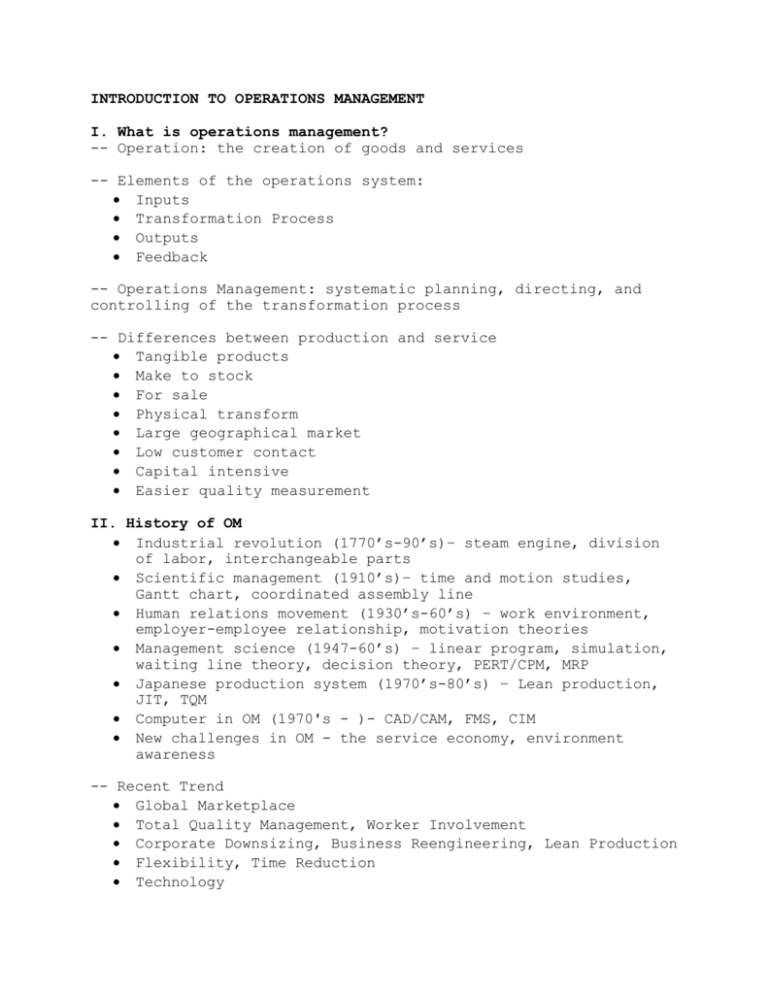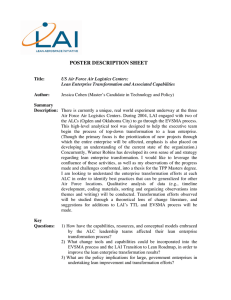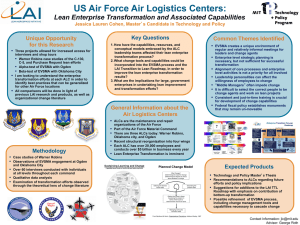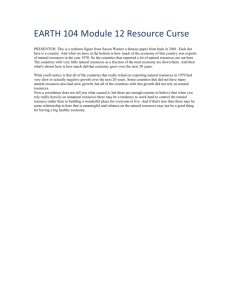Introduction to Operations Managment
advertisement

INTRODUCTION TO OPERATIONS MANAGEMENT I. What is operations management? -- Operation: the creation of goods and services -- Elements of the operations system: Inputs Transformation Process Outputs Feedback -- Operations Management: systematic planning, directing, and controlling of the transformation process -- Differences between production and service Tangible products Make to stock For sale Physical transform Large geographical market Low customer contact Capital intensive Easier quality measurement II. History of OM Industrial revolution (1770’s-90’s)– steam engine, division of labor, interchangeable parts Scientific management (1910’s)– time and motion studies, Gantt chart, coordinated assembly line Human relations movement (1930’s-60’s) – work environment, employer-employee relationship, motivation theories Management science (1947-60’s) – linear program, simulation, waiting line theory, decision theory, PERT/CPM, MRP Japanese production system (1970’s-80’s) – Lean production, JIT, TQM Computer in OM (1970's - )- CAD/CAM, FMS, CIM New challenges in OM - the service economy, environment awareness -- Recent Trend Global Marketplace Total Quality Management, Worker Involvement Corporate Downsizing, Business Reengineering, Lean Production Flexibility, Time Reduction Technology Environmental Issues Supply-chain Management Outsourcing III. Why study OM? -- Three major functions of any organization: Marketing - create demand, identify markets, etc. Finance/Accounting - track performance, pay bills, collect revenue, etc Operations - create products -- To find out HOW goods and services are created. -- Operations cost the most for any organization -- To examine career opportunities in OM. IV. The productivity challenge and OM -- Definition: -- Can be difficult to measure, especially for service industry -- Productivity increases improve standard of living -- Productivity variables: Labor – health, skill, education, training, knowledge Capital – investment in equipment and technology Management – effective use of labor, capital, and technology -- Factors that affect the US productivity growth: Education Capital and technology investment The service sector -- Components of OM Mission and Strategy Quality management Process design Layout Purchasing Inventory V. OM Related Jobs Product design Location Human resources and job design Scheduling Reliability and maintenance











